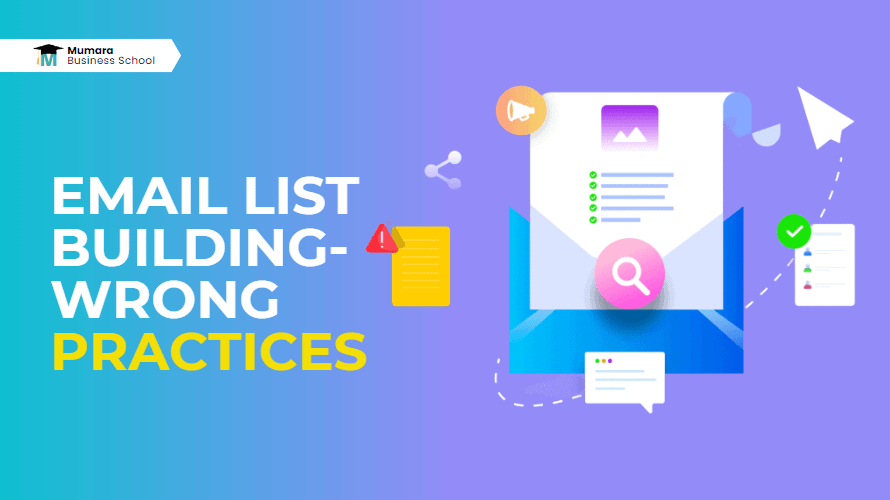When marketers and relatively new products/services search the internet for the best strategies to market their products, grow sales and reach more prospects, they always find email marketing as one of the most effective channels to achieve the goal. The first thing that they may require to kick start their email marketing efforts is always the email list that they don’t readily have. A permission-based email list building can be a long and hard process, and to cut it short, list hygiene is often compromised.
Table of Contents
- Why avoid purchasing an email list?
- Email extracting tools
- Why email list building is important?
- What if you trap in spam?
- The way forward
Why Avoid Purchasing an Email List?
Failing to recognize the importance of email list hygiene, an ill-reputed way of purchasing an email list comes into play. Hundreds and thousands of email contacts in the purchased email list, located even within your targeted geographical location, have nothing to do with your website, service, or product.
You do a lot of research to find a vendor who sells a good list, often named an opt-list, current list, or clean list. But the fact of the matter is that even if it is a clean list, it can’t guarantee the results. After all the hard work and labor of collecting the permission and building the double opt-in list of contacts, no one wants to sell it in the first place. Secondly, for the sake of discussion, if you are able to find one good list, it doesn’t necessarily mean that it will convert.
Email Extracting Tools

You are offered several free emails extracting tools by putting one single query into the Google search. It looks fairly easy and tempting to extract hundreds of email contacts in a short span of time from some websites, forums, etc. We’ve used the word some websites, and forums, because no Big Social Networking Platform (Facebook, Twitter, LinkedIn, etc.), e-commerce Marketplaces, and Forums will let the email extraction tool grab their user’s data.
further, if you have collected email contacts using one of the above-mentioned ways, you are actually violating the standards of permission-based emailing. ISPs and other 3rd party organizations place maximum effort to recognize email spam, unsolicited bulk emails relaying to the harvested list.
Why Email List Building Is Important?
Being on the poorest level of subscriber engagement practices, your emails are more likely to be rejected by the contacts in the purchased list. The recipients of the purchased email list have their inboxes flooded with marketing emails, as you aren’t the only company sending those emails. And being offended by irrelevant stuff, they are more prone to hit your email as spam.
Honey pots or spam trap emails are one of the efforts to pursue email spam and to penalize the wrongly harvested list. Honey pots and spam trap emails have more than one ways to operate; it can be one of the silent and unengaged emails in the list that you have purchased, and can instantly be triggered upon receiving your email that they have never opted to receive.
It can be one of the emails on the forums waiting for you to scrap or wrongly harvest the email list. Consequences of hitting a spam trap vary from situation to situation, depending upon the severity of the spam and the organization that has trapped the spam activity.
What if You Trap in Spam?
If you hit an ISP-originated spam trap, it can block the IP and the sending domain, either temporarily or even permanently. The temporary ban can be lifted by sending the request to unblock the IP. If some block list is running the trap that you have hit, then, they will list your IP or even a complete range of IPs publically.

As a result of all this, your IPs will be having a poor reputation, and the emails you send will be blocked across certain ISPs, received in the junk/spam folder, or doesn’t receive either in your inbox or in the spam folder.
The Way Forward
You can think of some alternative ways to get the permission of the contacts in the scraped or purchased list, i.e. sending initial emails asking them permission to send future email promotions, keeping only the ones that approved the permission, or removing others like, unengaged, bounced or spam traps, etc.
But even in this case, you will notice that only a few will give you permission, and you still have to bear the consequences of sending unsolicited emails, like low sending reputation, the listing of IPs, and hard bounced in return for sending to invalid email contacts, spam complaints from already offended recipients and damages of spam traps, monitored by the bots and don’t recognize your courtesy of asking the permission.
No matter whether you send it to an invalid email/ spam trap using Mumara or some other platform, it doesn’t make any difference. You will have to tolerate the damages associated with wrongly harvested emails.
Further, Mumara always recommends and encourages using a double opt-in process of email collection, for the best results and to help the organization to curb email spam. No matter how long will it takes to build an effective list, a journey of thousand miles begins with a single step.
Click to read more Email Marketing Blogs.






Add comment